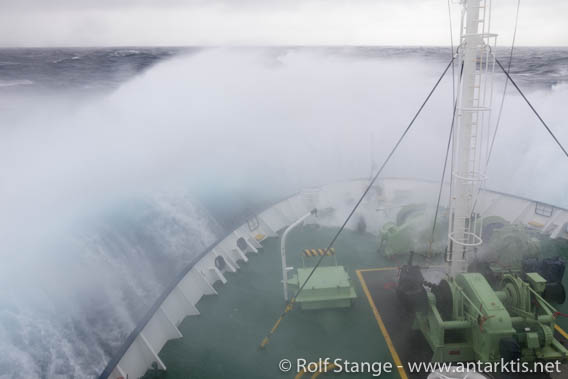Seitenstruktur
-
Spitsbergen-News
- Select Month
- March 2020
- February 2020
- March 2019
- January 2019
- December 2018
- September 2018
- June 2018
- May 2018
- April 2018
- March 2018
- February 2018
- January 2018
- December 2017
- November 2017
- October 2017
- September 2017
- June 2017
- May 2017
- April 2017
- March 2017
- February 2017
- January 2017
- December 2016
- September 2015
- April 2015
- March 2015
- February 2015
- January 2015
- December 2014
- October 2014
- August 2014
- June 2014
- May 2014
- April 2014
- March 2014
- November 2009
- April 2000
- Select Month

| Grytviken |
Ross Sea – Ushuaia, 3rd-18th March 2020
Wed
18 Mar
2020
This voyage had started so well, but now our luck was running out. After a stormy day east of Ross Island, the southern Ross Sea started to freeze over large areas. Beautiful to see, but the endless miles of dense, tough pancake ice were not helpful and cost us precious time.

We reached the Ross Ice Shelf just on the edge of the Bay of Whales in the late evening of 04th March. Well, „reached“ is relative. We did not get any closer than 12 nautical miles (22 km) until it became clear that it did not make much sense to proceed that direction. The ice shelf was just about visible with binoculars. It was already too dark for the helicopters and the clouds were moving in, so waiting would most likely just have meant a loss of even more precious time, especially as we could literally watch the sea freezing around us. So the choice was clear – actually, it was the only thing to do rather than a choice: leave. Clearly a disappointment, this was something we could all agree on.
More surprises in terms of ice were to follow the next days. The Ross Sea was really freezing over in large areas simultaneously. Fascinating and beautiful, but unfortunately slowing us down again.

The two days that turned out to be pivotal were the 06th and the 07th of March. We were to be steaming full ahead towards the Bellingshausen Sea and Peter I. Island – or at least, this is what we wanted to do. Instead, we spent most of these two days ploughing slowly through dense ice masses where we had expected ice-free water according to our ice charts. In the morning of the 7th of March we found ourselves 20 miles further away from Peter I. Island than 2 days ago at the some time. Two full days lost! That was a bit of a bad surprise.


Then we went up to speed again, but not enough to catch up with what we had lost in terms of time. We reached Peter I. Island finally in the early morning hours of the 13th of March, but it was quite stormy and the visibility pretty poor.

By then it had already become clear that we would not have enough time anymore to continue to the Antarctic Peninsula. Instead, we were forced to set course directly for the Beagle Channel and Ushuaia. No surprise that this caused great disappointment, and emotions went high. I can not say that I enjoyed the rest of the voyage. I don’t think I have ever written something like that in the blog before, but this is just what it was.
The passage towards Tierra del Fuego was mostly pretty rough, and we got our share of storm and heavy seas near Cape Hoorn, which we did, however, not see because the visibility was pretty poor.


We reached Ushuaia just about in time in the morning of the 18th of March. But big questionmarks were now hanging over everything disembarkation, saying goodbye, travelling home – the last voyage of Ortelius, to the Antarctic Peninsula, had already been cancelled days ago – was all uncertain by now, to say the least. The world outside Antarctica was now taken over by the Corona virus, and we would have to see what that meant for us.
last modification: 2020-03-24 ·
copyright: Rolf Stange

























